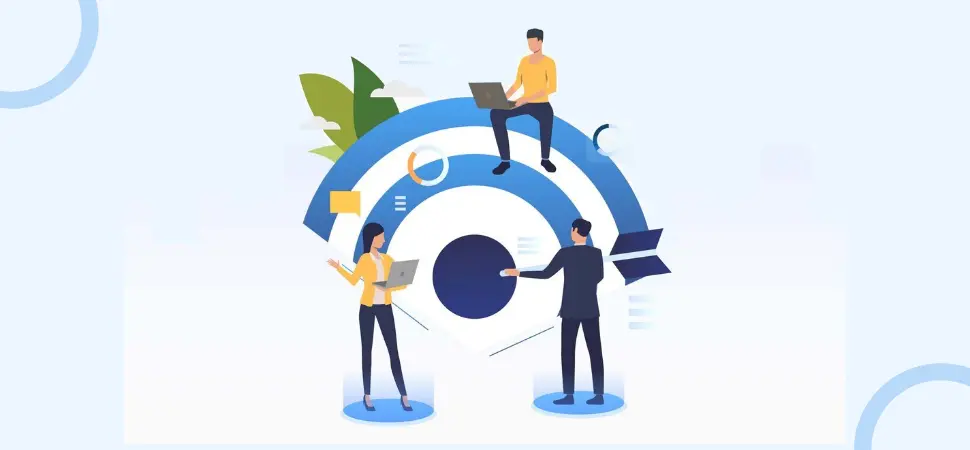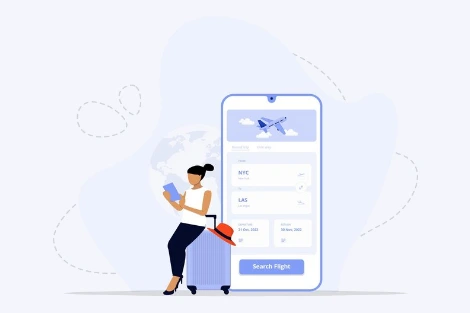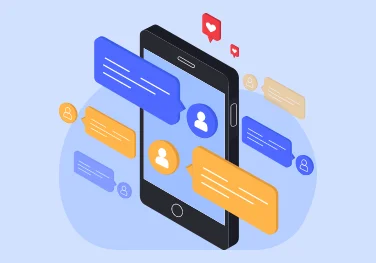How to build a Fuel Delivery App Development?
With the surge of on-demand services, industries are evolving to meet consumer needs. Just like UberEats revolutionized meal delivery, fuel delivery apps are changing how we refuel our cars. These apps bring the convenience of ordering fuel straight to your location, whether you're at home, work, or out and about. Instead of making a trip to the gas station, you can have fuel delivered to you with just a few taps on your phone, making it like having a mobile gas station.
In this guide, we'll delve into how fuel delivery apps function, who the major players in the market are, the features they offer, the process of building them, their advantages, customer retention strategies, and the factors influencing their cost. By the end, you'll have a comprehensive understanding of how these apps are reshaping the refueling experience.
So, without further ado, let's get started.
Overview of Fuel Delivery App
A fuel delivery app is a platform that connects users with fuel providers, allowing them to request fuel delivery to their location with just a few taps on their smartphone. This innovative solution eliminates the need for consumers to visit gas stations, saving them time and offering unparalleled convenience.
How Does an On-Demand Fuel Delivery App Work?
An on-demand fuel delivery app operates on a sophisticated system that seamlessly connects users in need of fuel with fuel suppliers or delivery contractors. The process involves several steps, from user registration to fuel delivery fulfilment. Here's a detailed breakdown of how an on-demand fuel delivery app works:
User Registration:
Users begin by downloading the fuel delivery app from the respective app store and registering for an account. During the registration process, users provide essential information such as their name, contact details, vehicle information, and preferred payment method. The app verifies the user's identity through email or phone number authentication to ensure the platform's security.
Location-Based Services:
Once registered, users input their current location or allow the app to access their GPS coordinates to determine their precise location. The app utilizes geolocation technology to identify nearby fuel delivery trucks or service providers capable of fulfilling the user's fuel order.
Fuel Quantity Selection:
Users specify the quantity of fuel they require, typically in gallons or litres, based on their vehicle's fuel tank capacity or immediate needs. The app may provide options for different fuel types e.g., gasoline, and diesel based on the user's vehicle specifications.
Order Placement:
After selecting the desired quantity of fuel, users place their order through the app. The app sends the order request to the nearest available fuel delivery truck or service provider equipped to fulfil the order.
Dispatch and Routing:
Upon receiving the order request, the app's dispatch system identifies the most suitable fuel delivery vehicle or contractor based on proximity, availability, and capacity. The dispatch system calculates the optimal route for the selected vehicle to reach the user's location efficiently.
Real-Time Tracking:
Users can track the progress of their fuel delivery in real time through the app. The app provides updates on the estimated time of arrival of the fuel delivery vehicle, allowing users to monitor its location on a map interface.
Fuel Delivery Fulfillment:
Once the fuel delivery vehicle arrives at the user's location, the delivery process commences. The delivery contractor or service provider initiates the fuel transfer process, typically using specialised equipment onboard the vehicle. Users may be required to unlock their vehicle's fuel tank or provide access to ensure a smooth fueling process
Order Completion and Receipt Issuance:
After payment is processed, the app generates a digital receipt detailing the transaction. Users receive the receipt via email or within the app for their records and verification purposes.
User Feedback and Rating:
Following the completion of the fuel delivery, users have the option to provide feedback and rate their experience with the service. Feedback and ratings help improve the overall quality of service and inform future users' decisions.
Some Famous Market Players in Fuel Delivery Apps
Several companies have entered the fuel delivery market, each offering its own unique features and services. Some notable players include Filld, Booster Fuels, and Yoshi Mobility . These companies have gained traction by providing reliable and convenient fuel delivery services to consumers and businesses alike.
Key Features to Developing an Online Fuel Delivery App
Customer App
- Easy Onboarding: Simplify the registration process with social media integration and mobile phone OTP verification for seamless account creation.
- Location Enablement: Allow users to share their vehicle's current location or manually input the parked location for easy fuel delivery.
- Select Fuel Type: Provide options for users to choose their preferred fuel type (petrol, diesel, gas) and select the desired quantity.
- Check Price: Display the price of the selected fuel type based on the quantity chosen, allowing users to confirm before proceeding to payment.
- Flexible Online Payment: Offer multiple payment options such as debit/credit cards, Google Pay, PayPal, and e-wallets to accommodate user preferences and ensure secure transactions.
- Real-Time Tracking: Provide users with real-time tracking of the delivery driver's location and estimated time of arrival.
- Order History: Enable users to view their past fuel orders, including billing details and total expenditure.
- Reviews and Ratings: Allow customers to rate and review their experience with the delivery driver, providing valuable feedback for service improvement.
Delivery Person App
- Sign up / Login: Enable drivers to create an account and submit necessary documents and profile details for verification.
- Active Status: Allow drivers to set their availability status (active or inactive) based on their schedule and preferences.
- Dashboard: Provide drivers with a dashboard to view their earnings, scheduled deliveries, and completed orders.
- Receive Requests: Enable drivers to accept or reject fuel delivery requests based on their availability and location.
- Payment Tracking: Allow drivers to track their daily earnings and view payment details within the app.
- Digital Signature: Provide functionality for drivers to obtain digital signatures from customers upon fuel delivery.
- Help and Support: Offer access to customer support and assistance for drivers whenever needed.
Admin Panel
- Login / Signup: Secure login to the web-based admin panel using email and password credentials.
- Dashboard: Provide an overview of delivery driver details, customer information, and total earnings for administrative purposes.
- Fuel Tankers Management: Allow admins to manage fuel tankers by adding, editing, or deleting vehicles within the admin panel.
- Features Management: Enable admins to manage app features, update customer and driver information, and handle payment processing.
- Push Notifications: Admins can send and manage push notifications to users and drivers, providing important updates and notifications regarding app events and activities.
How to Create a Fuel Delivery App Development?

Creating a fuel delivery app involves several stages. Here's a step-by-step guide to help you navigate the process.
Feature Definition and Planning
Define the core features and functionality of your fuel delivery app based on your research findings and user needs. Prioritize features such as seamless onboarding, real-time tracking, fuel selection options, and secure payment integration. Create a detailed plan outlining the development roadmap, feature implementation timeline, and resource allocation.
Development and Design
Develop both the frontend and backend components of your app using suitable programming languages and frameworks. Design an intuitive and visually appealing user interface (UI) that enhances the user experience and facilitates easy navigation. Implement essential features such as location-based services, payment processing, and real-time tracking to ensure smooth functionality.
Testing and Quality Assurance
Conduct thorough testing to identify and resolve any bugs, glitches, or usability issues within your app. Perform functional testing, usability testing, and compatibility testing across various devices and platforms. Ensure that your app meets industry standards for security, performance, and reliability before proceeding to deployment.
Deployment and Launch
Deploy your fuel delivery app to app stores, such as the Apple App Store and Google Play Store, for public release. Implement marketing strategies to promote your app and attract users, including social media campaigns, influencer partnerships, and targeted advertising. Monitor app performance and user feedback post-launch to make necessary updates and improvements.
Benefits of an On-Demand Fuel Delivery App
The benefits of an on-demand fuel delivery app extend to both consumers and fuel suppliers, offering convenience, efficiency, and sustainability. Here are several key advantages:
Convenience:
On-demand fuel delivery eliminates the need for consumers to visit gas stations, saving them time and effort. Users can request fuel delivery directly to their location, whether it's at home, work, or on the go, without disrupting their daily routines.
Time-saving process:
By bypassing the need to travel to a gas station, on-demand fuel delivery streamlines the refueling process, reducing wait times and eliminating the hassle of long queues at the pump. Users can enjoy the convenience of having fuel delivered whenever and wherever they need it, without delay.
Safety:
On-demand fuel delivery minimizes exposure to potential hazards associated with traditional refueling methods, such as accidents, spills, and theft. Users can avoid crowded gas stations and reduce their risk of exposure to safety hazards, enhancing overall safety and peace of mind.
Accessibility:
On-demand fuel delivery makes fuel accessible to users in remote or underserved areas where access to gas stations may be limited. This ensures that users have access to fuel when needed, regardless of their location, improving overall accessibility and mobility.
Environmental Impact:
On-demand fuel delivery can contribute to reducing vehicle emissions and environmental impact by optimizing fuel delivery routes and reducing idle time. By streamlining the refueling process and minimizing unnecessary trips to gas stations, on-demand fuel delivery promotes sustainability and environmental stewardship.
Cost Savings:
On-demand fuel delivery can result in cost savings for both consumers and fuel suppliers. Users may save money on fuel costs by taking advantage of competitive pricing and discounts offered through the app. Fuel suppliers can optimize delivery routes and reduce operational costs associated with maintaining traditional gas stations.
Also Read: A Complete Guide on Android & iOS Mobile App Development
Strategies to Retain Customers with Fuel Delivery App

Retaining customers is crucial for the long-term success of a fuel delivery app. Implementing effective strategies to enhance user satisfaction and loyalty can contribute to sustained growth and profitability. Several strategies to retain customers with a fuel delivery app are listed below:
Loyalty Programs:
Implement a loyalty program to reward customers for their repeat business and engagement with the app. Offer incentives such as discounts, cashback rewards, or loyalty points for every fuel purchase made through the app. Encourage users to accumulate points and redeem them for future fuel purchases or other rewards.
Personalized Offers:
Tailor promotional offers and discounts based on each customer's preferences, purchase history, and behavior. Use data analytics and customer segmentation techniques to identify trends and preferences among different user segments. Send personalized offers via email, push notifications, or in-app messages to incentivize repeat purchases and increase user engagement.
Excellent Customer Support:
Provide responsive and helpful customer support to address user inquiries, concerns, and issues promptly. Offer multiple channels for users to reach out for assistance, such as in-app chat support, email, or phone support. Train customer support representatives to provide timely and effective assistance, resolving user problems and ensuring a positive experience.
Seamless User Experience:
Continuously optimize the user experience (UX) of the app to ensure it is intuitive, user-friendly, and efficient. Simplify the fuel ordering process, streamline navigation, and minimize friction points to enhance usability. Gather feedback from users through surveys, ratings, and reviews to identify areas for improvement and address usability issues promptly.
Community Engagement:
Foster a sense of community among app users by encouraging interaction and engagement. Create social media groups, forums, or online communities where users can share experiences, tips, and recommendations related to fuel delivery. Organize events, contests, or referral programs to encourage user participation and foster a sense of belonging within the app community.
Strategies to Retain Contractors

In addition to retaining customers, it's equally important to focus on retaining fuel delivery contractors. Consider implementing the following strategies to incentivize and support contractors:
Fair Compensation:
Offer competitive compensation rates and incentives to attract and retain skilled fuel delivery contractors. Provide transparent payment structures and ensure timely payments to contractors for their services. Consider implementing bonus programs or performance-based incentives to reward contractors who consistently meet or exceed service standards.
Flexible Work Arrangements:
Provide contractors with flexibility and autonomy in managing their work schedules and availability. Allow them to set their own working hours, accept or decline delivery requests based on their availability, and customize their routes as needed. Flexibility in work arrangements can enhance job satisfaction and retention among contractors.
Clear Communication:
Establish clear communication channels and guidelines to ensure effective communication between contractors and the app platform. Provide contractors with access to support resources, contact information, and assistance channels to address any issues or concerns promptly. Foster open communication and transparency to build trust and rapport with contractors.
Performance Recognition:
Recognize and reward contractors for their outstanding performance and contribution to the app platform. Implement a system for acknowledging top-performing contractors through performance metrics, customer feedback, or peer recognition. Publicly recognize and showcase top-performing contractors to incentivize others and foster a culture of excellence.
Supportive Work Environment:
Create a supportive and inclusive work environment that values contractors' contributions and prioritizes their well-being. Provide access to resources such as vehicle maintenance support, insurance coverage, and safety equipment to ensure contractors' safety and comfort while on the job. Show appreciation for contractors' efforts and contributions through gestures such as thank-you notes, recognition events, or small tokens of appreciation.
Regular Feedback and Performance Reviews:
Establish a feedback loop for contractors to provide input, suggestions, and concerns about their experiences with the app platform. Conduct regular performance reviews and evaluations to assess contractors' performance, address any areas for improvement, and recognize their achievements. Use feedback to identify opportunities for enhancing contractor satisfaction and retention.
Factors that May Affect the Total Cost
Several factors can influence the total cost of developing a fuel delivery app. These include the complexity of app features, platform compatibility, design requirements, backend infrastructure, integration with third-party services, regulatory compliance needs, testing and quality assurance efforts, and ongoing maintenance requirements. Each of these factors contributes to the overall development, deployment, and maintenance costs of the app. By carefully considering these factors and budgeting accordingly, app developers can create a successful fuel delivery app that meets user needs while remaining cost-effective.
FAQs
How does the fuel delivery app ensure the safety of fuel delivery transactions?
The fuel delivery app implements robust security measures such as encryption, authentication, and secure payment processing to safeguard user data and transactions. Additionally, drivers undergo background checks and adhere to safety protocols to ensure safe and reliable fuel delivery.
Can users track the real-time location of the fuel delivery vehicle?
Yes, the fuel delivery app provides real-time tracking functionality that allows users to monitor the location of the delivery vehicle and track the progress of their fuel delivery in real-time.
What payment methods are accepted on the fuel delivery app?
The fuel delivery app accepts multiple payment methods, including credit/debit cards, mobile wallets, and digital payment platforms such as PayPal and Google Pay. Users can choose their preferred payment method for seamless and secure transactions.
How can I become a fuel delivery contractor for the app?
To become a fuel delivery contractor for the app, you can sign up through the app platform and provide necessary documentation such as licenses, vehicle details, and insurance information. Once verified, you can start accepting fuel delivery requests and serving customers through the app.
Conclusion
We believe the information provided above can be helpful for you. When it comes to creating a successful app, choosing the right mobile app development company is crucial.At Innow8 Apps, we're dedicated to providing top-quality services. Our team of experts will support you at every step of the app development process, guiding you on trends, costs, services, and tools needed for your app.
We offer affordable pricing and transparent terms, ensuring that you can build your app without breaking the bank. With Innow8 Apps, you can rest assured that you'll receive the best possible guidance and support for your app development journey.
Get started on creating your fuel delivery app and fuel the future of convenience!
Recent Blogs:

How to Create a Travel App – Step-by-Step Gui...
A quick guide on building a travel app with key features and tips for success....
Read More
How Does Instant Messaging Apps like Whatsapp...
Read a full article to know about the history of whatsapp, how whatsapp earns money and how ...
Read MoreHow to Choose the Right WhatsApp Clone App Ex...
Discover the key criteria for selecting the perfect WhatsApp Clone App Expert in 2024. Ensur...
Read More